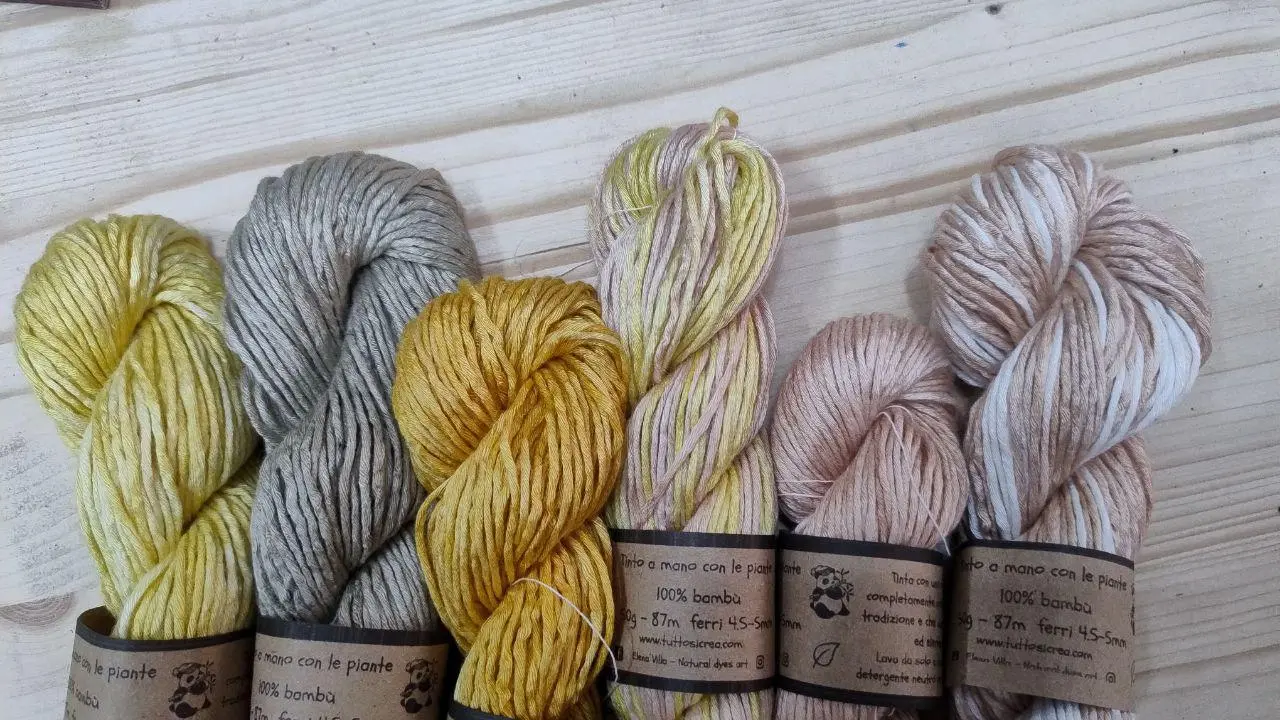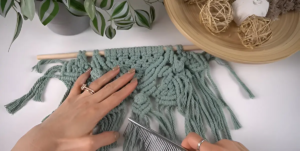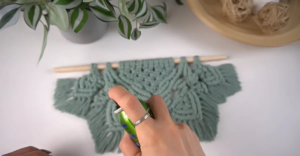Have you ever wondered what makes some macrame projects last for decades while others fall apart within months? The answer lies in understanding macrame cord fiber content analysis through precise laboratory testing methods that reveal the hidden secrets of your crafting materials.
In today’s competitive crafting world, knowing the exact composition of your macrame cords isn’t just beneficial—it’s absolutely essential for creating professional-quality pieces that stand the test of time. Whether you’re a seasoned artisan or just beginning your macrame journey, understanding fiber content analysis will revolutionize how you select and work with your materials.
This comprehensive guide unveils the scientific processes behind macrame cord fiber content analysis, explores cutting-edge laboratory testing techniques, and provides actionable insights that will elevate your crafting game to unprecedented levels. Get ready to discover industry secrets that most crafters never learn!
Understanding Macrame Cord Fiber Content Analysis: The Foundation of Quality Crafting
Macrame cord fiber content analysis represents the scientific examination of textile fibers used in macrame crafting materials. This sophisticated process involves identifying, quantifying, and characterizing different fiber types within cord compositions through various laboratory testing methodologies.
The significance of macrame cord fiber content analysis extends far beyond simple curiosity. When you understand exactly what materials comprise your cords, you gain invaluable insights into their strength characteristics, durability expectations, care requirements, and aesthetic properties. This knowledge directly impacts project longevity, maintenance needs, and overall crafting success.
Professional artisans increasingly rely on fiber content analysis to make informed purchasing decisions, especially when working on commissioned pieces or high-value projects. The investment in quality testing pays dividends through reduced material waste, improved customer satisfaction, and enhanced reputation within the crafting community.
The Science Behind Fiber Identification
Laboratory testing for macrame cord fiber content analysis employs multiple analytical techniques, each designed to reveal specific characteristics of the materials. These methods range from simple visual examination to sophisticated instrumental analysis using advanced equipment.
Microscopic examination forms the cornerstone of initial fiber identification, allowing technicians to observe cellular structures, cross-sectional shapes, and surface characteristics unique to different fiber types. Cotton fibers display distinctive ribbon-like shapes with twisted configurations, while synthetic fibers often show perfectly round cross-sections with smooth surfaces.
Chemical testing methods provide definitive identification through controlled reactions with specific reagents. These tests can distinguish between natural and synthetic materials, identify polymer types in synthetic fibers, and detect fiber blends with remarkable precision. The accuracy of modern chemical analysis techniques exceeds 99% when performed by qualified laboratory professionals.
Advanced Laboratory Testing Methods for Macrame Cord Analysis
Burn Testing: The Traditional Approach
Burn testing remains one of the most accessible methods for preliminary macrame cord fiber content analysis, though it requires careful safety precautions and experienced interpretation. Different fiber types exhibit characteristic burning behaviors, odors, and residue formations that provide valuable identification clues.
Natural fibers like cotton and hemp typically burn steadily with minimal smoke production, leaving soft ash residues and producing distinctive cellulose combustion odors. Synthetic materials often melt before burning, creating hard bead-like residues and releasing chemical odors that experienced testers can readily identify.
While burn testing offers quick results and requires minimal equipment, it cannot provide precise quantitative analysis of fiber blends. Additionally, the destructive nature of this testing method makes it unsuitable for valuable or limited cord supplies.
Microscopic Analysis: Revealing Hidden Details
High-powered microscopic examination represents the gold standard for detailed macrame cord fiber content analysis in professional laboratory settings. This non-destructive technique allows comprehensive fiber characterization without consuming significant amounts of material.
Trained analysts examine individual fiber samples at magnifications ranging from 100x to 1000x, documenting surface textures, cross-sectional shapes, and internal structures. Digital imaging systems capture detailed photographs that serve as permanent records for quality control and documentation purposes.
Advanced facilities utilize scanning electron microscopy (SEM) for ultra-high-resolution analysis, revealing surface details invisible to conventional optical microscopes. These sophisticated instruments can identify fiber treatments, surface coatings, and manufacturing characteristics that influence cord performance.
Chemical Dissolution Testing
Chemical dissolution testing provides quantitative analysis of fiber blends through selective solvent systems that dissolve specific fiber types while leaving others intact. This method proves particularly valuable for analyzing complex multi-fiber cord compositions.
The testing process involves treating measured samples with carefully selected chemical solutions under controlled temperature and time conditions. Technicians then separate, dry, and weigh the remaining materials to calculate precise fiber percentages within the original sample.
Modern laboratories employ standardized protocols developed by international testing organizations, ensuring consistent and reproducible results across different facilities. These procedures minimize measurement errors and provide confidence levels suitable for commercial applications.
Quality Control Applications in Macrame Manufacturing
Incoming Material Inspection
Manufacturers of macrame cords increasingly implement comprehensive fiber content analysis as part of their incoming material inspection processes. This proactive approach identifies potential quality issues before they impact production schedules or final product characteristics.
Regular testing of raw materials ensures consistency between different supplier lots, identifies unauthorized substitutions, and verifies compliance with product specifications. These quality control measures reduce manufacturing costs by preventing downstream problems and maintaining consistent product performance.
Documentation of all macrame cord fiber content analysis results creates valuable historical records that support traceability requirements and facilitate continuous improvement initiatives. Many manufacturers maintain databases spanning multiple years to track supplier performance and identify trending quality issues.
Finished Product Verification
Completed macrame cords undergo final verification testing to confirm that manufacturing processes haven’t altered fiber compositions or introduced contamination. This final quality check provides assurance that products meet advertised specifications and regulatory requirements.
Statistical sampling plans determine the appropriate number of tests required to achieve desired confidence levels while minimizing testing costs. Risk-based approaches focus additional testing on products with historical quality issues or those destined for critical applications.
Third-party testing laboratories often provide independent verification services that enhance credibility with customers and regulatory agencies. These external validations demonstrate commitment to quality and provide objective assessments of manufacturing capabilities.
Economic Benefits of Professional Fiber Analysis
Cost Reduction Through Informed Purchasing
Smart crafters and manufacturers realize significant cost savings through strategic application of macrame cord fiber content analysis results. Understanding exact fiber compositions enables more accurate price comparisons between suppliers and prevents overpaying for premium materials when standard grades suffice.
Bulk purchasing decisions benefit tremendously from detailed fiber analysis, as buyers can negotiate better prices while ensuring consistent quality across large quantities. The upfront investment in testing often pays for itself through improved purchasing efficiency and reduced material waste.
Long-term relationships with suppliers improve when both parties understand exact material specifications and quality expectations. Clear communication based on objective test results eliminates misunderstandings and builds trust throughout the supply chain.
Enhanced Product Differentiation
Craft businesses leverage detailed fiber content knowledge to create compelling marketing messages that highlight superior material quality and performance characteristics. Consumers increasingly appreciate transparency regarding product compositions and manufacturing processes.
Premium pricing strategies become more defensible when supported by comprehensive laboratory testing documentation. Customers willingly pay higher prices for products with verified quality characteristics and clear performance advantages over competitors.
Brand reputation benefits significantly from consistent delivery of products that meet or exceed advertised specifications. Word-of-mouth recommendations from satisfied customers often prove more valuable than traditional advertising investments.
Environmental Impact and Sustainability Considerations
Sustainable Fiber Selection
Growing environmental awareness drives increased demand for sustainable macrame cord options, making fiber content analysis essential for evaluating environmental impacts. Different fiber types have vastly different carbon footprints, water usage requirements, and end-of-life disposal characteristics.
Natural fibers generally offer superior biodegradability compared to synthetic alternatives, but agricultural production methods significantly influence overall environmental impact. Organic cotton and hemp fibers represent environmentally preferred options for eco-conscious crafters and manufacturers.
Recycled fiber content provides another avenue for reducing environmental impact, though careful analysis ensures that recycling processes haven’t compromised essential performance characteristics. Advanced testing methods can identify recycled content percentages and assess quality retention.
Lifecycle Assessment Integration
Comprehensive lifecycle assessments incorporate macrame cord fiber content analysis results to evaluate total environmental impacts from raw material production through final disposal. These holistic evaluations guide sustainable product development and material selection decisions.
Energy consumption during fiber production varies dramatically between different material types, with some synthetic fibers requiring significantly more energy than natural alternatives. However, durability considerations often favor synthetic materials for applications requiring extended service life.
Water usage patterns differ substantially between fiber types, with conventional cotton production requiring large quantities of water compared to hemp or synthetic alternatives. Regional water availability considerations influence optimal fiber selection for environmentally conscious manufacturers.
Technology Advances in Fiber Analysis
Automated Testing Systems
Modern laboratories increasingly employ automated systems for high-volume macrame cord fiber content analysis, reducing testing costs and improving result consistency. Robotic sample preparation systems eliminate human variability and increase throughput capacity.
Artificial intelligence integration enables rapid pattern recognition in microscopic images, accelerating identification processes while maintaining high accuracy levels. Machine learning algorithms continuously improve through exposure to larger datasets and expert validation.
Real-time testing capabilities allow immediate feedback during manufacturing processes, enabling rapid corrections when fiber content deviations occur. This responsiveness minimizes production of non-conforming materials and reduces waste generation.
Portable Testing Equipment
Field-portable analysis equipment enables on-site fiber content verification without requiring laboratory facilities. These compact instruments provide immediate results for quality control applications and incoming material inspection.
Handheld devices utilizing near-infrared spectroscopy can identify common fiber types within seconds, making them ideal for rapid screening applications. While less precise than laboratory methods, portable equipment offers valuable preliminary assessment capabilities.
Cost-effective portable solutions make advanced testing accessible to smaller operations that cannot justify investments in full laboratory facilities. Rental and service programs further reduce barriers to adopting professional testing practices.

DIY Mini Boho Macrame Curtains
Introduce a touch of youthful elegance and artistic flair to your space with our DIY Mini Boho Macrame Curtains. Crafted to perfection, these handwoven tapestries embody the spirit of Bohemian and contemporary European-American styles.
Frequently Asked Questions
How accurate are modern laboratory tests for macrame cord fiber content analysis?
Modern laboratory testing methods achieve accuracy levels exceeding 99% when performed by qualified technicians using proper procedures and calibrated equipment. Standard test methods developed by international organizations ensure consistent results across different laboratories. However, accuracy depends on sample representativeness, proper preparation techniques, and appropriate method selection for specific fiber types.
What is the typical cost range for professional macrame cord fiber content analysis?
Professional testing costs typically range from $50 to $200 per sample, depending on the complexity of analysis required and turnaround time expectations. Simple identification tests cost less than comprehensive quantitative analysis of complex fiber blends. Volume discounts often apply for multiple samples, and some laboratories offer package deals for regular customers.
How long does it take to receive laboratory test results for fiber content analysis?
Standard turnaround times for macrame cord fiber content analysis range from 3 to 10 business days, depending on testing complexity and laboratory workload. Rush services are available for urgent requirements, typically delivering results within 24 to 48 hours for additional fees. Simple identification tests may be completed within hours, while complex blend analysis requires more time.
Can fiber content analysis detect treatments or finishes applied to macrame cords?
Yes, advanced analytical techniques can identify various treatments, finishes, and coatings applied to macrame cords during manufacturing. Spectroscopic methods detect chemical signatures of sizing agents, water repellents, antimicrobial treatments, and other functional finishes. This information proves valuable for understanding performance characteristics and care requirements.
Future Trends and Innovations
The future of macrame cord fiber content analysis promises exciting developments that will further enhance accuracy, speed, and accessibility of testing services. Emerging technologies like blockchain integration will provide immutable records of test results, supporting supply chain transparency and anti-counterfeiting efforts.
Nanotechnology applications may enable embedded sensors within cord structures that continuously monitor fiber degradation and performance changes throughout product lifecycles. These smart materials could revolutionize quality assurance and predictive maintenance approaches for critical applications.
Standardization efforts continue expanding internationally, facilitating global trade and ensuring consistent quality expectations across different markets. Harmonized testing methods and certification programs will simplify compliance requirements for manufacturers serving multiple geographic regions.
Conclusion
Macrame cord fiber content analysis through professional laboratory testing represents an invaluable investment for serious crafters, manufacturers, and retailers committed to delivering superior quality products. The scientific insights gained through comprehensive testing enable informed material selection, optimized purchasing decisions, and enhanced product differentiation strategies that drive business success.
Understanding the various testing methodologies, quality control applications, and economic benefits empowers stakeholders to make strategic decisions that improve both immediate results and long-term sustainability. As technology continues advancing and environmental considerations become increasingly important, fiber content analysis will play an even more critical role in the evolving macrame industry landscape.









